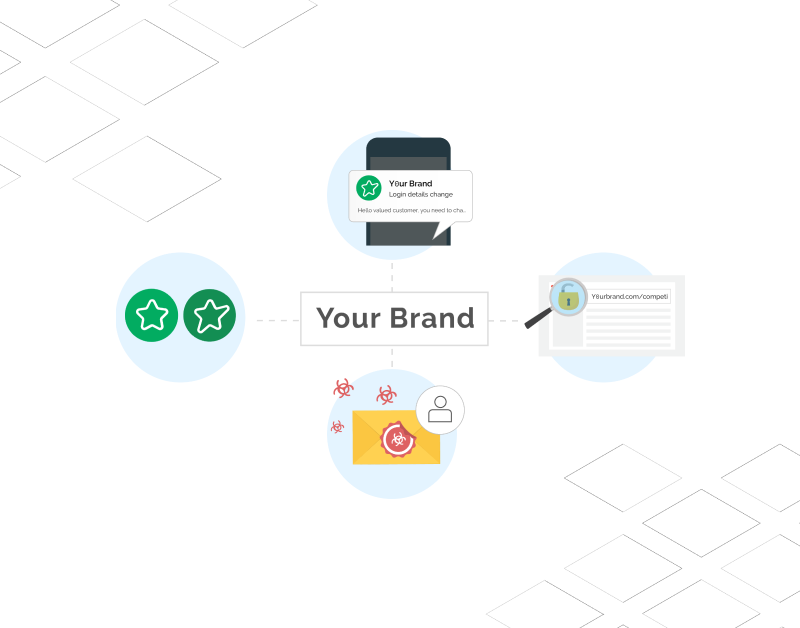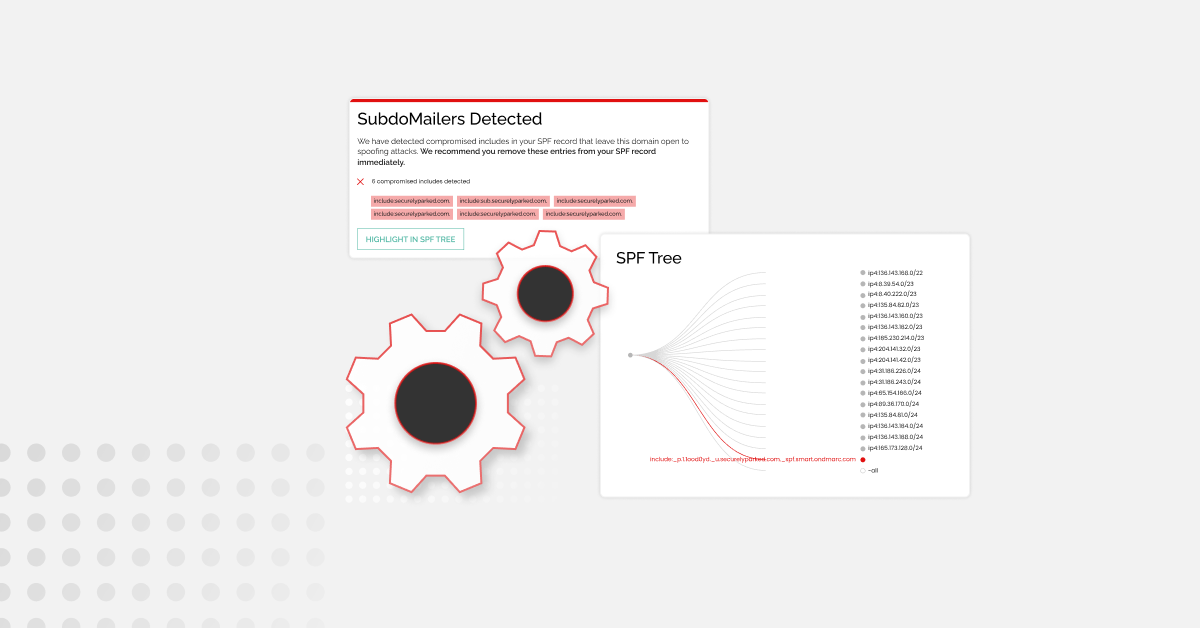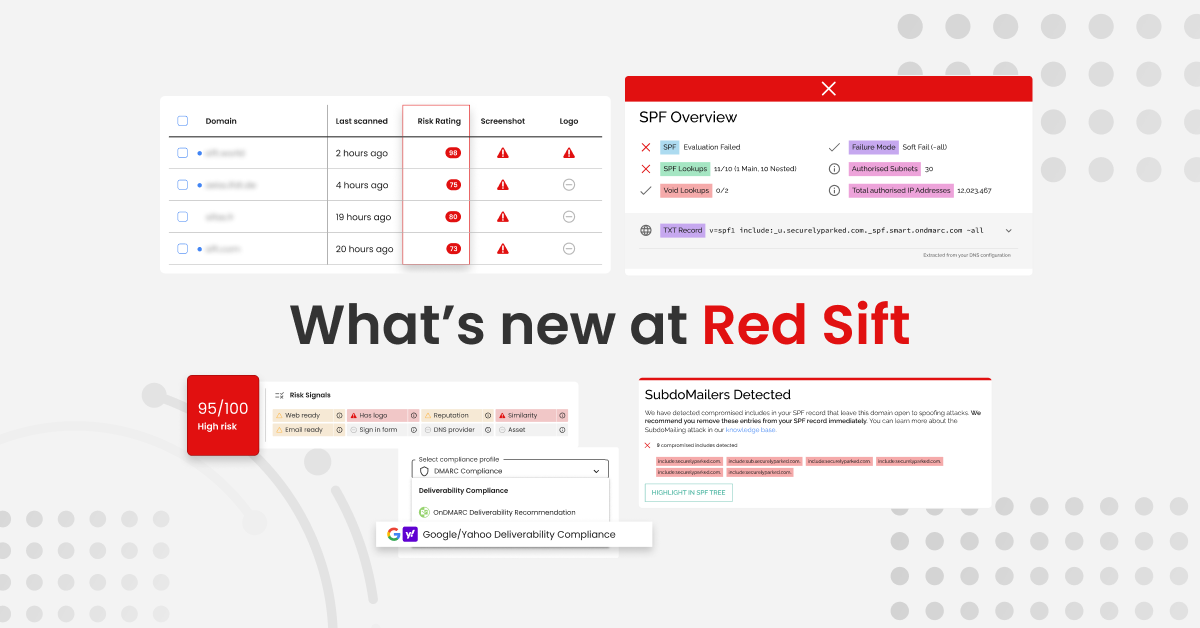Brand protection refers to the strategy, tools, and rules a business has in place to prevent bad actors from abusing its brand. Implementing a brand protection strategy allows you to safeguard your reputation and revenue. It also protects anyone that comes into contact with your brand – including your customers.
What does this mean in the digital era?
Modern brand protection isn’t solely centered on preventing the sale of counterfeit physical goods. It’s also about preventing attackers from achieving their goals through digital methods, as well as monitoring brand assets to ensure legitimate use.
This isn’t to say that counterfeiting and intellectual property theft aren’t still significant issues. But, attackers have increasingly begun to use the internet as a vector for brand misuse so our methods for combating it must evolve as well.
Traditional brand protection methods often employ specific staff and professionals to monitor and tackle brand abuse. In contrast, online brand protection primarily uses brand protection software and automation.
What is brand abuse?
85% of businesses experienced a brand infringement in 2019.
Brand abuse comes in all shapes and sizes. But, ultimately the term describes the infringement of a company’s brand by an outside party or attacker. This party will use your business’ reputation for its own gain, at the expense of your brand equity.
Modern methods of brand abuse include:
- Fake or ‘Lookalike’ Websites
- Online Logo/Asset Misuse
- Business Email Compromise
- Email Impersonation
- Scam Campaigns and Phishing Attacks
- Fake Social Media Accounts
- Malicious Mobile Apps
Why is brand protection important?
Whether you’re a small startup or a large enterprise, you rely heavily on your reputation to attract new customers and enable growth.
Common forms of brand abuse such as email impersonation and online logo abuse can cause potential customers to lose trust in your brand. In fact, 71% of UK consumers say they will stop purchasing from a company altogether if their trust is broken. Consequently, maintaining your brand’s reputation is incredibly important to protect revenue.
In this day and age, brand protection is value preservation. Protecting the brand you’ve built, and safeguarding the investment you’ve made in it, is crucial for assuring the continued success of your organization.
Key steps to protecting your brand in the digital space
As the threats to your brand evolve, it’s important that you keep up to date with the latest methods of thwarting them. We’ve come up with a handy checklist of brand protection strategies that you might not already be aware of.
- Logo and asset detection and management: A logo detection service scans the Internet for unauthorized uses of a company’s assets. It can flag these uses to you, increasing the speed with which a takedown can be initiated.
- Domain lookalike takedown: Many of today’s online brand abuse attacks use lookalike websites to harvest credentials, money, and more from customers. To combat this, lookalike discovery and takedown functionality should form part of an organization’s modern brand protection strategy.
- Implement DMARC at a policy of p=reject: DMARC is an outbound email security protocol that protects domains against exact impersonation. Implementing DMARC stops bad actors from impersonating your domain to carry out phishing attacks and other types of email fraud.
- BIMI with VMC: BIMI is a standard that displays validated trademarked logos for all DMARC-authenticated emails. BIMI adds brand impressions to every email to help reassure recipients that it is from the organization it claims to be from. We found that the use of BIMI increases consumer confidence in the legitimacy of an email by 90%.
- Don’t rely on SEGs alone: Many companies still rely on Secure Email Gateways (SEGs) to protect employees’ email inboxes. However, SEGs struggle to identify phishing attacks, which could compromise your customers’ data. Consider employing machine-learning-based brand protection software to detect phishing attacks and warn the end-user.
While the above measures are essential building blocks for protecting your organization from brand abuse, there’s no silver bullet. Your brand protection strategy should be a layered one. Other brand protection best practices to implement include market surveillance, commercial insights, distributor compliance, incident management, customer and staff awareness programs, and training.
How can Red Sift help?
At Red Sift, we enable security-first organizations to successfully communicate with and ensure the trust of their employees, vendors, and customers. Our Integrated Email Security and Brand Protection Platform is made up of a number of gold-standard and award-winning products: OnDMARC, OnDOMAIN, and OnINBOX. These are designed to work in unison to block outbound phishing attacks, analyze the security of inbound emails, and provide domain impersonation defense for company-wide threat protection.
To find out more about how our platform can contribute to your organization’s brand protection strategy, download our eBook today.







